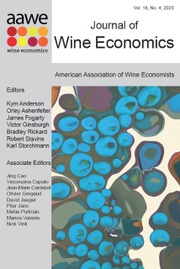If, like me, you are a fan of the wines produced along the greater Loire Valley, this book will be of considerable interest, both as an informative read and as a reference for the various domaines. It covers the Loire all the way from the Muscadets of the Atlantic coast to Sancerre and Pouilly Fumé far inland, and there is even a section on the wines of the upper Loire in the Auvergne. The emphasis is on the varying terroir and its impact on the wines produced. The pioneering efforts of many of the vignerons in biodynamic and organic cultivation are also highlighted. The book is suitable both for novices (who may wish to skip some of the detailed winery descriptions at first reading) and those familiar with the wines of the region, who will learn a great deal about the terroir, geology, and evolution of the appellation and cru system in the region.
The book is part of a series entitled “The Classic Wine Library” that features a selection of wine-growing areas around the world, with some notable omissions, at least at the present time (e.g., Bordeaux, Northern California, and Tuscany). This volume begins with a brief history and geography/geology of the area around the Loire River and an overview of the wines from the area: styles, appellations, grape varieties, and viticultural practices. The body of the book is divided into five chapters covering the major regions of the Loire: the Nantais (Muscadet), Anjou (including Saumur, Savennières, and Haut-Poitou), Touraine (including Chinon, Bourgueil, and Vouvray), the Centre Loire (Sancerre and Pouilly-Fumé), and the Auvergne.
Each chapter begins with an overview of the region, followed by sections discussing the notable appellations. The basic facts on production, grape varieties, and styles are provided in text boxes for the region and important subregions. There are also detailed maps of each region and important subregions that show the areas of cultivation, as well as the various appellations and crus. The main sections of each chapter are followed by detailed descriptions of notable producers in the area and a brief list of other producers of interest. The book's appendices contain a useful glossary of technical terms (both French and English), complete tables of wine production quantities in the various subregions, and a brief description of each of the 2004–2024 vintages.
The descriptions of individual producers make lively reading, and reflect the deep knowledge that Blanning has of the region and its vignerons. She has clearly visited and toured most of these wineries and offers brief and colorful characterizations of their owners and winemakers, who are usually the same person(s). Each of the main sections contains a brief history of the winery, its present day operation, and details on the method of production, often biodynamic or at least organic. As in most French wine regions, appellations in the Loire are characterized by detailed requirements of alcohol levels, allowed yield per hectare, allowed grapes, and methods of vinification. These restrictions sometimes pose a challenge for producers, especially as they may have been codified in an earlier era when the climate and tastes were different. We learn in these brief studies of individual producers the ways in which they are responding to these and other challenges.
The book contains a number of boxes that discuss specific topics, such as the changing role of frost due to earlier spring ripening from climate change, the specific evolution of the Cabernet Franc grape in the Loire, and the special nature of the soils of Sancerre. Another nice feature is the set of boxes that highlight a few places to stay and eat in the key wine villages. Although it is not a guidebook, this information could be useful for anyone wishing to make a wine tour of the area, which is of course also famous for its many chateaux that are open to the public. The detailed producer descriptions mentioned above could be useful for anyone wishing to tour the region and taste the wines.


